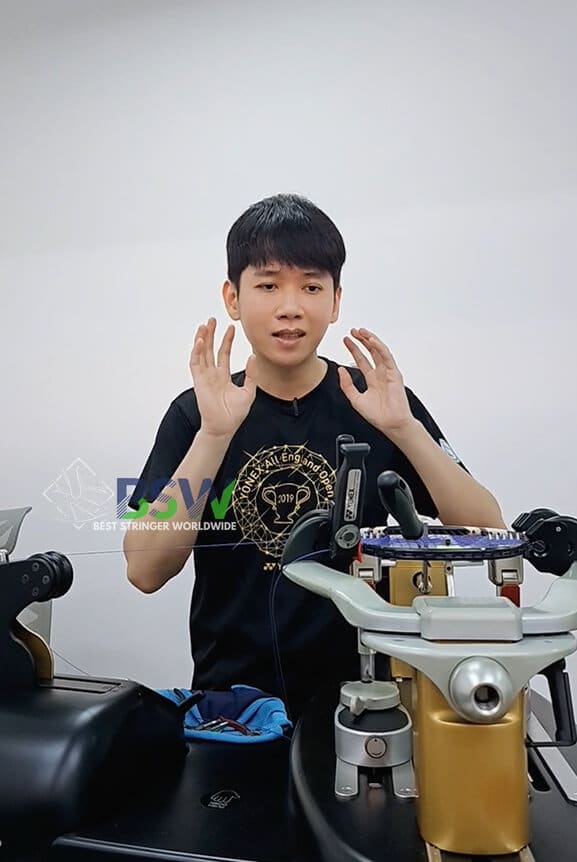The International Tennis Federation (ITF) is the governing body of world tennis, wheelchair tennis, and beach tennis. Established in 1913, the ITF plays a crucial role in maintaining the integrity and consistency of tennis across the globe. At Best Stringer Worldwide (BSW), we’ve created this comprehensive guide to help stringers and players understand the ITF regulations, particularly those concerning racquet specifications.
Understanding ITF Regulations
The ITF sets and enforces rules for international tennis competitions, including Grand Slam tournaments, Davis Cup, and Fed Cup. These regulations cover various aspects of the sport, from court dimensions to player conduct. However, for stringers and players, the regulations concerning tennis racquets are particularly important.
Racquet Specification Checker
Tennis Racquet Specifications
According to ITF regulations, tennis racquets must adhere to specific dimensions and characteristics:
- Overall Racquet Length: The total length of the racquet, including the handle, must not exceed 29 inches (73.68 cm).
- Racquet Width: The overall width of the racquet must not exceed 12.5 inches (31.75 cm).
- Hitting Surface: The hitting surface of the racquet must be flat and consist of a pattern of crossed strings connected to a frame and alternately interlaced or bonded where they cross.
- Hitting Area Dimensions: The hitting area must not exceed 15.5 inches (39.37 cm) in overall length and 11.5 inches (29.21 cm) in overall width.
- String Pattern: The stringing pattern must be generally uniform, particularly in the center of the hitting surface. However, the ITF allows for slightly denser stringing in the center area.
- Frame Modifications: The frame, including the handle and strings, may not have any attached objects or protrusions, except those used solely and specifically to limit or prevent wear and tear, vibration, or to distribute weight.
| Specification | Tennis (ITF) | Badminton (BWF) |
|---|---|---|
| Overall Length | Max 29 inches (73.68 cm) | Max 680 mm |
| Overall Width | Max 12.5 inches (31.75 cm) | Max 230 mm |
| Hitting Surface Length | Max 15.5 inches (39.37 cm) | Max 280 mm |
| Hitting Surface Width | Max 11.5 inches (29.21 cm) | Max 220 mm |
| String Pattern | Uniform, slightly denser in center allowed | Uniform pattern required |
| Frame Modifications | Limited to wear prevention, vibration reduction, weight distribution | Similar to tennis regulations |
Badminton Racquet Specifications
While our focus is primarily on tennis, it’s interesting to compare ITF regulations with those of other racquet sports. The Badminton World Federation (BWF) sets the following specifications for badminton racquets:
- Overall Racquet Length: Must not exceed 680 mm.
- Racquet Width: Must not exceed 230 mm.
Racquet Components:
- Handle: The part gripped by the player.
- Strung Area: The part of the racquet used for hitting the shuttle.
- Head: The part that bounds the strung area.
- Shaft: Connects the handle to the head.
- Throat (if present): Connects the shaft to the head.
Strung Area:
- Must be flat and consist of a pattern of crossed strings.
- Length must not exceed 280 mm.
- Width must not exceed 220 mm.
Frame Modifications: Similar to tennis regulations, badminton racquets may not have attachments or protrusions except those used solely for limiting wear and tear, vibration, or distributing weight.
The Importance of Regulation Compliance
Understanding and adhering to ITF regulations is crucial for several reasons:
- Tournament Eligibility: Non-compliant racquets may lead to disqualification in official tournaments.
- Fair Play: Regulations ensure a level playing field for all competitors.
- Performance Optimization: Working within the regulations, players and stringers can optimize racquet performance legally.
- Innovation Guidelines: Manufacturers use these regulations as guidelines for developing new racquet technologies.
ITF Regulations Quiz
Impact on Stringing

For professional stringers, understanding ITF regulations is essential:
- String Pattern: While the ITF allows for slightly denser stringing in the center, stringers must ensure the overall pattern remains generally uniform.
- Vibration Dampeners: These are allowed but must be placed outside the pattern of crossed strings.
- String Savers: The use of string savers must not alter the fundamental characteristics of the racquet or modify the intended pattern of stringing.
String Life Calculator
ITF regulations play a vital role in maintaining the integrity and consistency of tennis worldwide. For stringers and players alike, understanding these rules is crucial for optimizing performance within the boundaries of the sport.
At Best Stringer Worldwide (BSW), we're committed to helping stringers and players improve their knowledge and skills. Whether you're looking to optimize your racquet setup or provide better service to your clients, understanding ITF regulations is an invaluable asset.
For those interested in deepening their knowledge and skills in tennis racquet stringing, consider enrolling in a comprehensive tennis racquet stringing course. BSW offers professional tennis stringing certification programs that cover all aspects of racquet customization, including compliance with ITF regulations.
Remember, while these regulations may seem restrictive, they create a framework within which players, stringers, and manufacturers can innovate and excel. By mastering the intricacies of these rules, you can push the boundaries of performance while staying within the spirit of the game.

About Best Stringer Worldwide
Best Stringer Worldwide is a comprehensive badminton and tennis stringing education program. We provide in-depth training on stringing techniques, racquet technology, and player-specific customization. Our curriculum is designed to help stringers understand and meet the needs of all badminton players, from casual enthusiasts to competitive athletes.
Read More